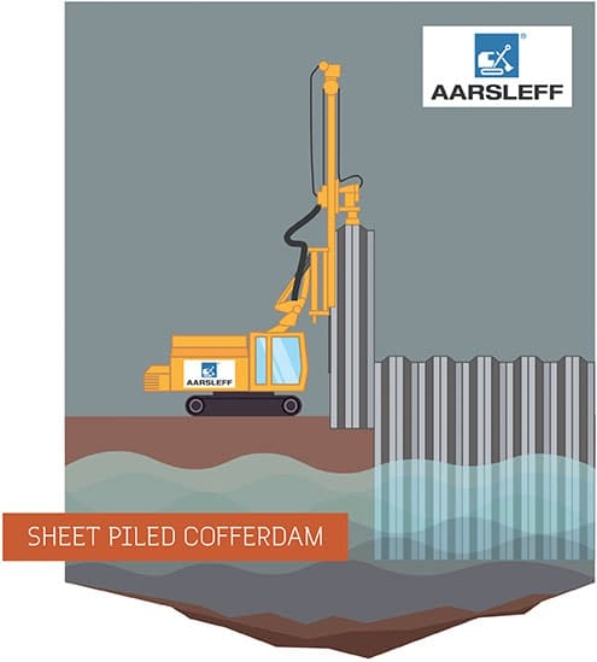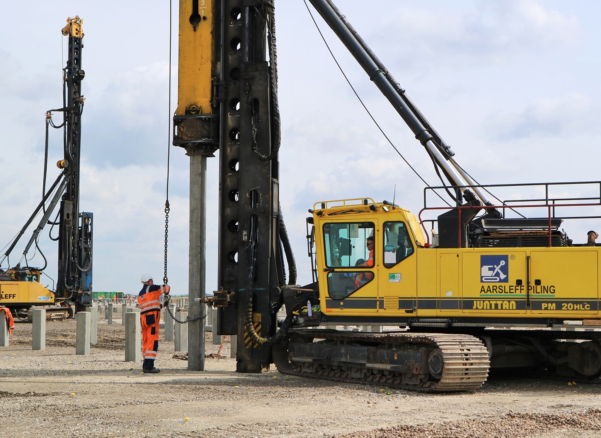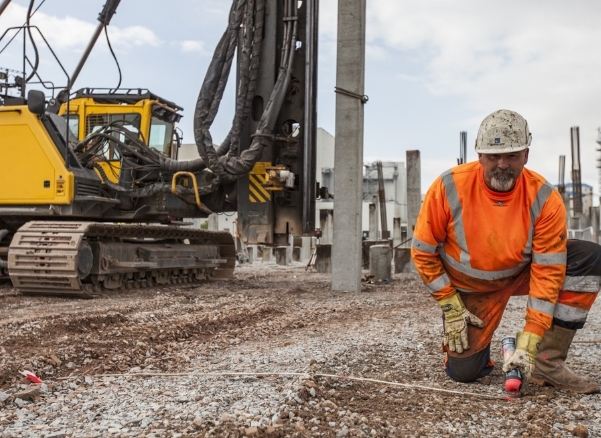What is a Cofferdam?
How does a cofferdam work?
By definition, a cofferdam is a temporary watertight enclosure used to pump out water and expose the bed of a body of water. [1] Diverting the water from the construction site allows construction workers to build structures on dry land.
According to research, the first recorded use of a cofferdam can be traced back to 539 BC when King Cyrus of Persia used it to temporarily divert water from the Euphrates River, aiding the capture of Babylon. In 102 AD, the Romans used wood pilings as a cofferdam to build Trajan’s Bridge across the Danube River. [2] The Industrial Revolution further transformed the construction of cofferdams. The development of steam-powered machinery and improved materials such as steel and concrete allowed for the construction of larger and more durable cofferdams.
Today, cofferdams are commonly used in the construction industry. One of the most popular techniques for underwater construction is using cofferdams.

Where are cofferdams used?
Cofferdam construction is generally used to create the foundations of structures, including bridge piers, marines, harbours, ports, docks, locks and dams, which are built in open water or used on land where there is a high groundwater table.
In the marine industry, cofferdams are used during ship and boat repairs. By creating a dry environment, shipyards can carry out maintenance work on the hulls of vessels, including welding and painting, without needing to worry about the effects of the water. Cofferdams are also used in the construction and repair of offshore oil platforms, where a dry and stable work environment is essential.
Another important use of cofferdams is in the installation and maintenance of water infrastructure, such as pipelines and sewage systems. Construction crews use cofferdams to create a dry area for laying pipe and carrying out repairs or inspections. This ensures that the work can be done quickly and efficiently, minimising the impact on local water supplies and reducing the risk of environmental contamination.
Types of Cofferdams
There are various types of cofferdams depending on the depth, soil conditions, water level fluctuation and types of materials used. [3]
Cofferdams can be classified into the following types:
- Earthen Cofferdams
- Rock-Filled Cofferdams
- Braced Cofferdams
- Cellular Cofferdams
- Single-Walled Cofferdams
- Double-Walled Cofferdams

How are cofferdams installed?
The installation process of a cofferdam can differ, however, it consists of the following key steps:
- Select the appropriate location for the cofferdam based on water depth, soil conditions and size of the structure
- Clear the selected area of any debris or obstructions
- Drive sheet piles into the ground using hydraulic or vibratory hammers to form a watertight barrier
- Interconnect sheet piles using special connectors to form a continuous barrier
- Dewater the cofferdam enclosure by pumping out water to create a dry work environment
- Begin construction work such as excavation, foundation work, or other activities
- Remove the cofferdam by extracting the sheet piles from the ground and restore the area to its original condition
What Is the Difference Between a Caisson and a Cofferdam?
A caisson and a cofferdam are both engineering structures used in construction projects to create a dry work environment, particularly in marine projects such as bridges and piers. While they both serve a similar purpose, there are key differences between the two in terms of their design, construction, and application.
Firstly, a caisson is a watertight structure that is used in the construction of foundations in areas with difficult soil conditions. It is typically cylindrical or rectangular in shape and is constructed onshore before being lowered into place using cranes or other heavy equipment. Caissons are often prefabricated and require careful planning to ensure a proper fit and alignment with the construction site. Once in place, they are usually filled with concrete to provide stability and support for the structure being built.
On the other hand, a cofferdam is a temporary structure built to enclose an area and allow for dewatering. Unlike caissons, cofferdams are built in situ, meaning they are constructed at the construction site using sheet piles, steel plates, or other materials to form a watertight barrier.
Another key difference between caissons and cofferdams is their application. Caissons are primarily used in deep water and are typically employed in the construction of offshore structures such as oil platforms and bridge piers. Caissons are designed to withstand high water pressure and are often used in conjunction with other foundation techniques such as pile driving. On the other hand, cofferdams are usually used in shallower water and are more commonly employed for smaller-scale construction projects.

Advantages of cofferdams
Cofferdams offer many advantages including:
- Versatility – They can be used in a variety of situations and applications, from bridge building to pipeline installation
- Environmental Protection – Cofferdam construction helps to protect the surrounding environment from pollution and sedimentation by containing construction work within a limited area
- Water Control – They are effective in controlling water flows and preventing flooding during construction in waterlogged areas
- Safety – Cofferdams can improve safety by creating a stable work area for construction workers, reducing the risk of accidents and injuries
- Cost-Effective – Cofferdams can be an efficient and cost-effective solution for construction projects in waterlogged areas, as they eliminate the need for expensive dewatering systems
Sources
- 1. Britannica. (n.d.). Cofferdam. Retrieved on 5 August 2024, from
https://www.britannica.com/technology/cofferdam - 2. Pile Buck Magazine (2022). Cofferdams 101: History, Applications, Materials, Types, and More. Retrieved on 5 August 2024, from:
https://pilebuck.com/cofferdams-101-history-applications-materials-types/ - 3. The Constructor. (n.d.). Types of Cofferdams and Their Construction Details. Retrieved on 5 August 2024, from
https://theconstructor.org/water-resources/types-of-cofferdams-construction-details/13807/#goog_rewarded








